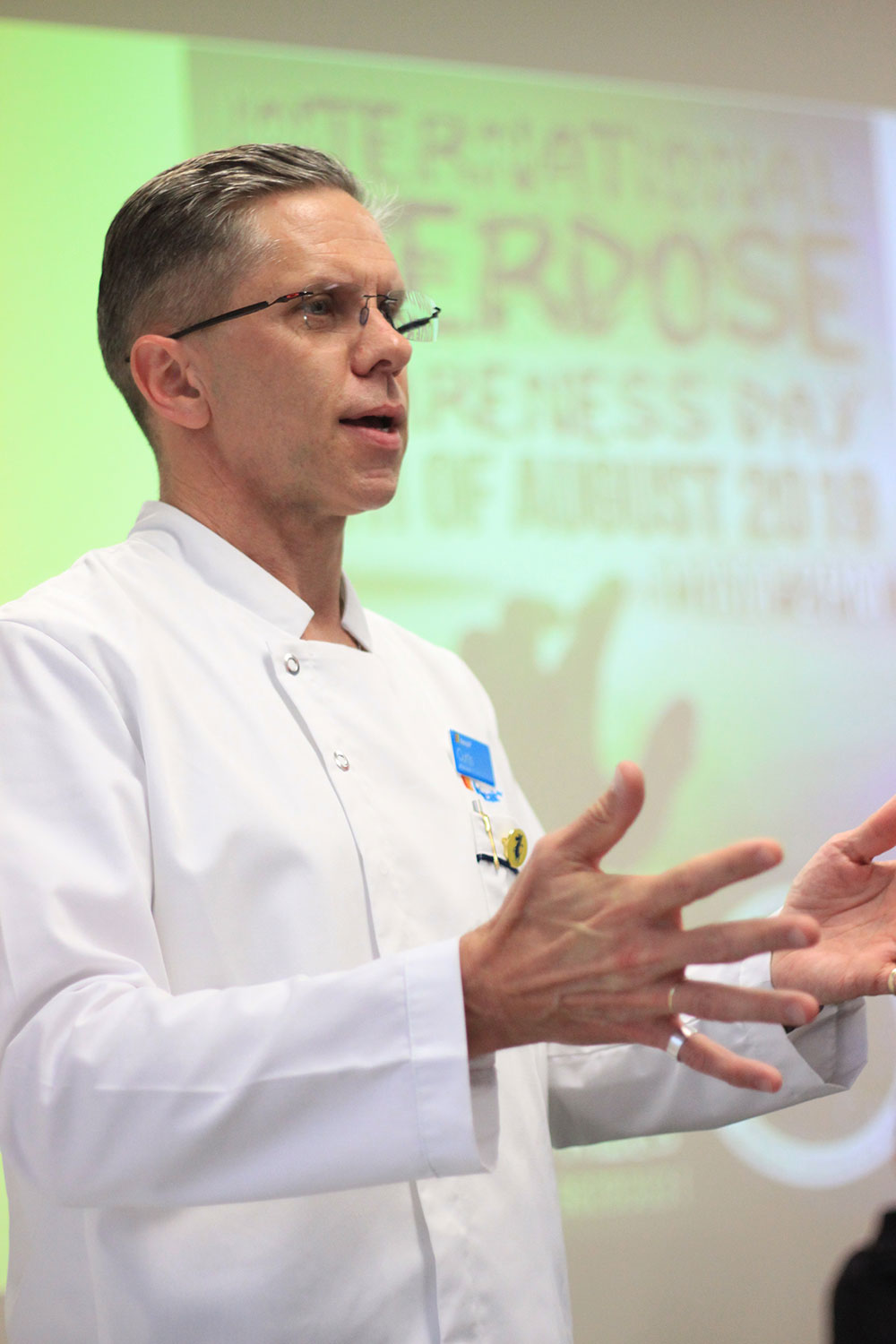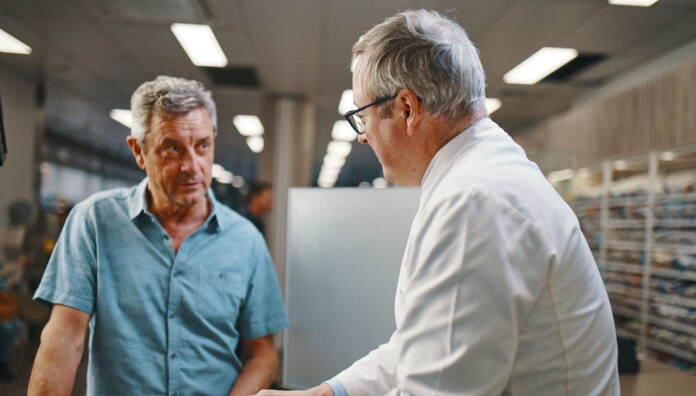Results from the Take Home Naloxone (THN) Pilot are in: the program enabled 1,649 overdose reversals, which equates to three lives saved per day.
The findings date from when the pilot commenced on 1 December 2019 until 30 June 2021, however the program is slated to run until the end of June this year.
Patients accessed THN at 846 sites across New South Wales, South Australia and Western Australia, including 605 pharmacies, as well as general health services, needle and syringe programs, justice and corrections, and alcohol and drug (AOD) treatment services.
A total of 43,212 units of naloxone were supplied across the three jurisdictions during the pilot, compared to just 4,495 units across the nation in the previous 4 years.
‘These results show that by removing [the barrier] of cost to access, we can reduce fatality and long-term injury,’ said PSA National President Associate Professor Chris Freeman.
Naloxone is available without a prescription across the country. But A/Prof Freeman said the price of the medicine puts it out of reach for many unless they receive a prescription under the Pharmaceutical Benefits Scheme (PBS).
‘There are few programs in which very low cost interventions achieve such astounding reductions in death,’ he said.
‘The evidence is now clear – removing cost as a barrier saves hundreds and hundreds of lives.’
An increasing role for pharmacists
The program also highlighted the role pharmacists can play in harm minimisation, said Advance Practice Pharmacist Dr Jacinta Johnson MPS.
More pharmacists also understand the value in supplying THN to patients with or without a history of illicit opioid use, she said.
‘We now think about supply in the context of chronic pain, not just opioid use disorder,’ Dr Johnson told Australian Pharmacist.
Conversations with patients who use opioids for pain have also started to influence the perception of naloxone in the community.
‘More patients see it as a first aid measure that they want to have on hand if they or a family member use opioid medicines,’ she said.
Western Sydney-based community pharmacist Curtis Ruhnau MPS, whose pharmacy is participating in the Pilot, agrees that discussing naloxone with patients is a key benefit of the program.
‘All of the patients I’ve spoken to, their doctors ascertain they don’t need naloxone,’ he said.
But, as 80% of overdoses in Australia are unintentional and 70% are related to prescription opioid use, Mr Ruhnau said this perception does not align with the evidence.
‘When we talk to the patients, I give them those statistics,’ he said. ‘I describe [naloxone] quite simply as an Epipen – it’s just a way to bring people back if they accidentally overdose on opioids.’
Mr Ruhnau also explains the necessity of having naloxone on hand for patients who accidentally double up on their medicine. While the risk of double dosing on blood pressure medicines, for example, is readily discussed, Mr Ruhnau said this is unfortunately not the case when it comes to opioids.
‘The risks are much higher and the consequences far worse if we accidentally double up on opioids, and we haven’t acknowledged that,’ he added.
Improving community awareness of naloxone
There were some limitations to the pilot, Dr Johnson said. Less than half of the pharmacies eligible took part in the program, and only around half actively supplied THN during the evaluation period.
‘This shows there is still a lot of room to increase awareness around the role pharmacists can play in offering THN, and look at how we can improve workflows and pharmacist confidence so more conversations around [the medicine] occur,’ she said.
Naloxone may not be a new medicine, but the recommendation to offer take-home supply to manage opioid toxicity in the community is new for many pharmacists.
‘As with any new recommendation, it can take time for the process of offering THN to become routine,’ she said.
‘Even simple things like placing naloxone stock or small reminder signs near where opioid medicines are stored, or adding a point to discuss supply to induction procedures when patients commence methadone or buprenorphine treatment can help to bring THN supply into our everyday practice.’
All pharmacists can take the opportunity to upskill in this area.
‘It would be great to see pharmacists prompting their colleagues and any pharmacy interns they support to look at this as a Continued Professional Development topic too,’ Dr Johnson said.

Mr Ruhnau said there are also other ways pharmacists can increase awareness of overdose and naloxone through community engagement. For example, when his local AOD centre held a talk on Overdose Awareness Day in 2019, he was adamant that a pharmacy perspective was vital.
‘I basically pushed my way in,’ he said.
Before the event, a nurse from the needle and syringe program asked Mr Ruhnau what pharmacists could do about overdose.
When the conversation turned to oxycodone/naloxone’s safety profile, he informed her that the naloxone component of the medicine doesn’t help to prevent overdose.
‘I said, “Naloxone is only absorbed through the nose or as an injection and the only reason it’s [in Targin] is to stop you getting constipated”,’ he said. ‘She had no idea. A lot of people think Targin is safer and they can’t overdose on it.’
Mr Ruhnau’s presentation on naloxone at the event left a strong impression on attendees.
‘As I was talking, people were crying,’ he said. ‘When I talked to them afterwards, people said, “If we had this, Dad would have still been here” or “My brother would have still been here”.’
Healthcare education goes both ways, and when the pharmacy started a needle exchange program, the same nurse helped staff out with the language.
‘Someone came in and asked for a black box, and a staff member had no idea what that was,’ Mr Ruhnau said. ‘So she made a list of all the different jargon for needle and syringe exchange.’
Through his AOD connections, Mr Ruhnau also conducts bi-annual presentations for Tafe students studying to be counsellors, discussing issues such as the value of dose administration aids (DAAs) to help AOD patients manage diazepam and staged supply.
‘I volunteer my time to talk to them as a pharmacist,’ he said. ‘I’ve taken other pharmacists along as well, including our WebsterPak manager who talked about how DAAs can help people manage substance use and misuse.’
Looking forward
When the THN Pilot concludes later this year, Mr Ruhnau said it will be ‘absolutely vital’ that naloxone is universally subsidised.
‘We are saving lives, and we need to be able to be independent in doing this,’ he said. ‘We cannot rely on prescribers.’
With the short-term trial proving to be such a success, A/Prof Freeman said it must be scaled up so free THN access is national, and permanent.
‘The longer we wait to implement this universally across the country, the more Australians will sadly die from a preventable death,’ he said.
‘I call on the government to make this life-saving medicine free through all pharmacies across all jurisdictions, including making it the first pharmacist-initiated and supplied PBS item.’



 John Jones MPS, pharmacist immuniser and owner of My Community Pharmacy Shortland in Newcastle, NSW[/caption]
John Jones MPS, pharmacist immuniser and owner of My Community Pharmacy Shortland in Newcastle, NSW[/caption]


 Debbie Rigby FPS explaining how to correctly use different inhaler devices[/caption]
Debbie Rigby FPS explaining how to correctly use different inhaler devices[/caption]




 Professor Sepehr Shakib[/caption]
Professor Sepehr Shakib[/caption]

 Lee McLennan MPS[/caption]
Lee McLennan MPS[/caption]
 Dr Natalie Soulsby FPS, Adv Prac Pharm[/caption]
Dr Natalie Soulsby FPS, Adv Prac Pharm[/caption]
 Joanne Gross MPS[/caption]
Joanne Gross MPS[/caption]








